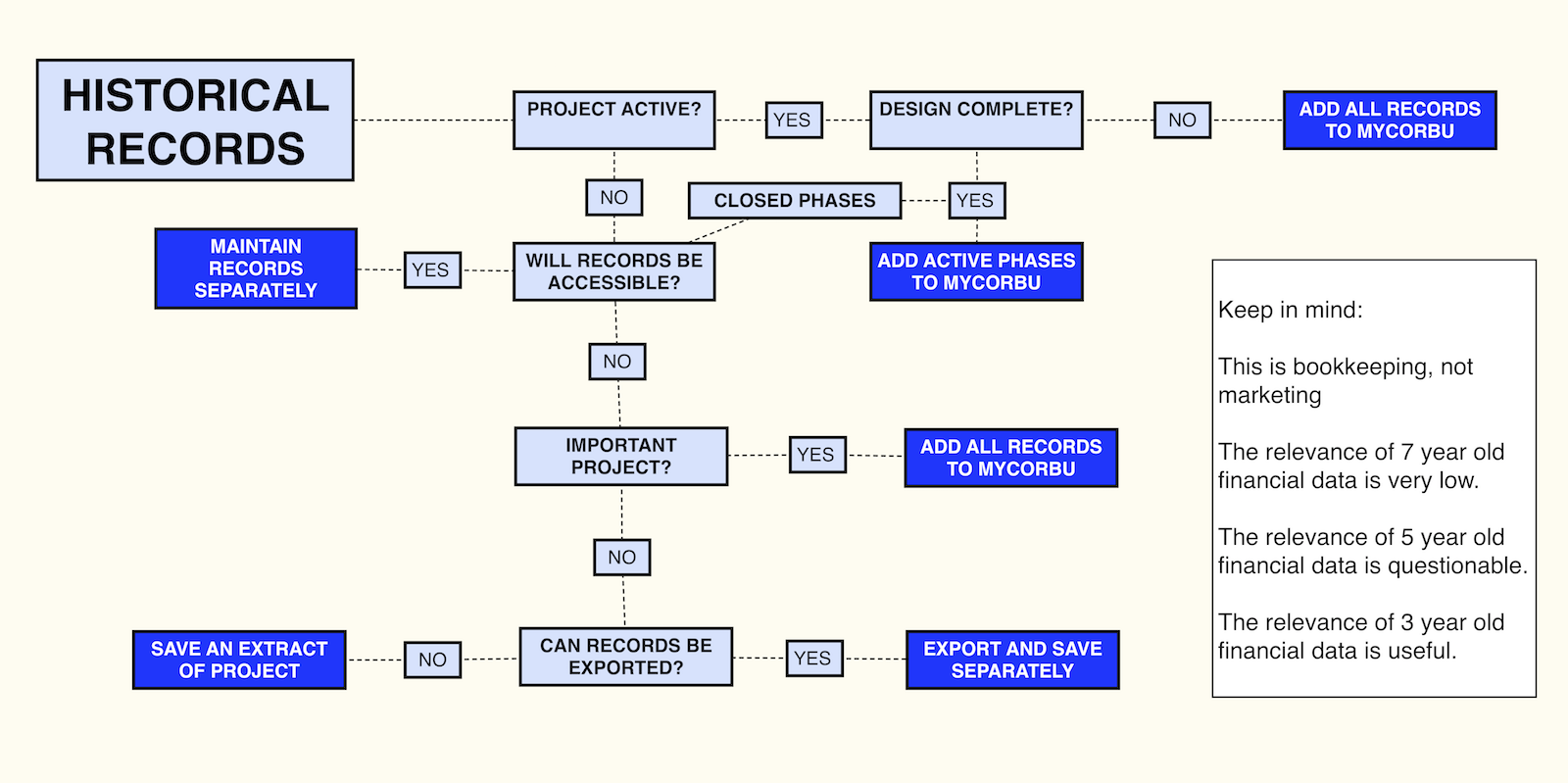|
Historical Data are any records that happened before you started using Ochre. Historical RecordsHistorical Data has slightly different considerations for time and transactions (money). Historical Time Records is described first, then Historical Bookkeeping Records. This diagram shows the algorithm that I recommend to determine which records to transcribe into a new system. The image is downloadable as a PDF. Historical Time RecordsFor our purposes when speaking of historical data, the project may still be under way, but you may want to consider time records for closed projects for reference. Each record must contain a Date, Project-Phase, Number of Hours, and a User. Optionally you can also enter a Description. For Ochre there is just one way to add historical data from past work. Manually. There are three strategies you can follow.
You can also use a hybrid approach. Enter some projects accurately and some projects by summarizing. Perhaps the newest projects are entered accurately and older projects are summarized. Or perhaps other criteria determines which approach is used on which projects. KEY CONSIDERATION For financial accuracy, you need to change the Rates in the Staff table for each timeframe during which those Rates were in effect. Ignore this for less accurate, but still valuable records. The benefit of transcribing your historical data is being able to look up these records easily when estimating new work. Who can enter historical time records A Level 1 User can add their own historical records. A Level 5 User or Admin can add records for anyone. How you enter historical time records Add your own historical time records like regular time. If you are entering time for others, go to the Expenses page and click the ‘Historical Time’ button. When to add historical time data Adding historical time records can be done anytime. The addition of some records will be more urgent than others. The frequency with which you access this historical information should inform your decisions about how much to recreate and when. Suggested minimal historical TIME entries:
Historical Bookkeeping RecordsThe Bookkeeping feature of Ochre also has a need for historical data. The strategy is very similar, but refer to the graphic above for some additional considerations.
Keep in mind:
Bookkeeping creates a need for historical data, at least in the short term. Most of that need can be satisfied with a fairly minimal number of entries per project or category. Suggested minimal historical BOOKKEEPING entries:
Comments are closed.
|
|
Architekwiki | Architect's Resource | Greater Cincinnati
© 2012-2022 Architekwiki
© 2012-2022 Architekwiki


